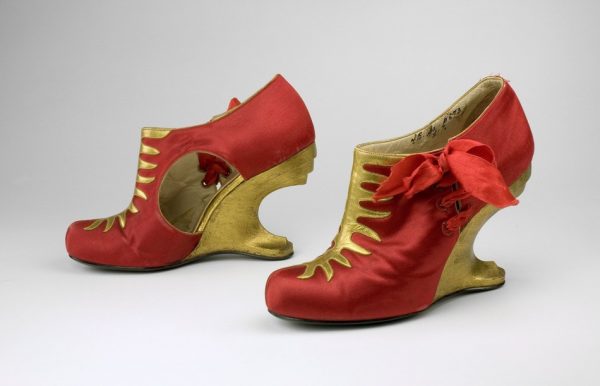TORONTO, Jan. 31, 2019 /PRNewswire/ – The Bata Shoe Museum is excited to announce the opening of its newest exhibition WANT: Desire, Design and Depression Era Footwear. A powerful reflection on a turbulent decade, WANT explores the myriad dramatic design changes seen in footwear fashion, including the introduction of the wedge and the re-emergence of the platform.

As global economies tumbled when the U.S. stock market crashed in 1929, want proliferated: want of employment, want of security, want of escape. The desires born from want drove an explosion of cultural creativity from film to fashion. Some creative endeavors offered distraction from the troubling times, while others stoked desire in the hopes that by encouraging consumption the economy could be redeemed. Many of the most innovative shoe designs in the history of Western fashion were created during this decade of want. Shoe designers Salvatore Ferragamo, André Perugia and Steven Arpad played with the architecture of footwear, creating uplifting platforms and wedges as well as futuristic novelty heels and revealing peep toes that reflected escapist Hollywood glamour and new conceptions of fashionable femininity.
“I’m absolutely delighted to have arrived at the Bata Shoe Museum at such a time of creative ambition and excellence”, said Dr. Steven Parissien, Executive Director. “WANT demonstrates what our museum does so brilliantly: making historic subjects and issues come to life through insightful and invigorating interpretation while showcasing the breadth of our own, world-class collection. It’s the first of many engaging and thought-provoking exhibitions we are planning over the next few years.”
Showcasing approximately 60 rare and exquisite 1930s artefacts and focusing on themes such as Novelty, Exoticism, The New Leisure, Objects of Desire, All That Glitters and Future Footwear, WANT takes visitors on a journey through the fashions of the time, the styles, colours and the materials used. Highpoints of the exhibition include the iconic Rainbow Platform by Ferragamo designed for Judy Garland in 1938; bold black and white leisure shoes worn by Hollywood actor Bela Lugosi; and a powerful timeline highlighting the highs and lows of the decade.
Curated by the Bata Shoe Museum’s Senior Curator Elizabeth Semmelhack, the exhibition includes artefacts from the Bata Shoe Museum’s permanent collection, as well as loans from the Metropolitan Museum of Art in NYC, the Ferragamo Museum in Florence and a personal collection of Shoe Icons from Moscow.
“The Great Depression was a period of incredible creativity in shoe design from uplifting platforms to flashy spectators,” said Semmelhack. “While these shoes are incredible in their own right, the reasons behind this explosion of new shapes and styles in the 1930s is equally fascinating and reflects many of the cultural and economic stressors of the decade.”
Strikingly beautiful and powerful, WANT: Desire, Design and Depression Era Footwear will be on view until March 30, 2020.





